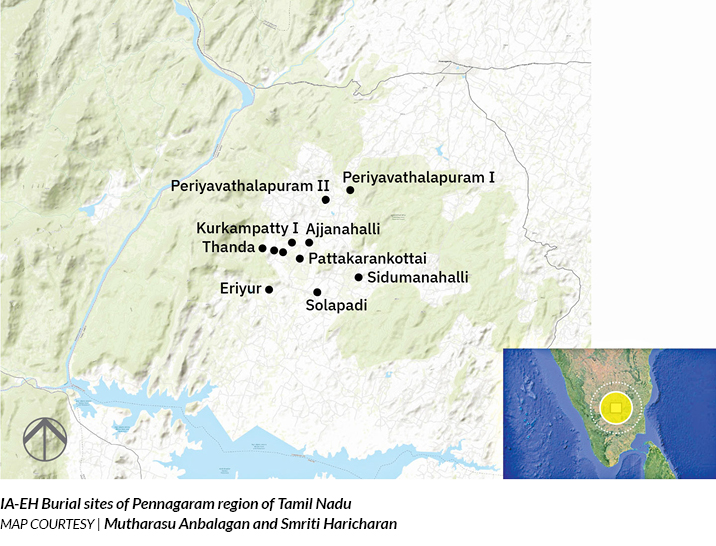| megalithic and burial landscapes
PAST AND PRESENT LANDSCAPES, COMMUNITIES,
AND THE IRON AGE EARLY HISTORIC BURIALS
TAMIL NADU
Mutharasu Anbalagan & Smriti Haricharan
LA82 |
|
| The case study examines megalithic burial structures in Tamil Nadu’s Dharmapuri district, highlighting their cultural significance, landscape context, and threats from natural and human-driven disturbances.
|
|
Megalithic burials and the Iron Age Early Historic period
Megaliths, as is evident from the name and often quoted, are made of large stones. Glyn Daniels (1980) writes about the first use of this term, which in Greek means great (mega) stone (lithos), in 1849 by Algernon Herbert in a book called Cyclops Christianus. The term as Daniels says has been popular, however, this can also be a misleading description for all megaliths, leading to attempts by scholars like Childe (1948) to define it, differentiating them from other funerary monuments like the pyramids. Christopher Tilley (1999) writes about the peculiarities of the term megalith, which was previously used not just to define a mortuary practice but also as a culture. However in more recent literature, there has been a move away from using the term megalithic culture (Haricharan 2016), and to rather recognize that it is a mortuary practice followed in varied spatial and temporal contexts. Morrison (2016) has discussed the various ways in which people across time have viewed these monuments, artifacts, and the landscape. This paper would like to delve in-depth and review megalithic burials and the landscape at Solapadi village, Dharmapuri District, Tamil Nadu, and discuss the megalithic burials and local community interaction at this site over a year. The paper also briefly discusses this site in context with eleven other megalithic burial sites in proximity to Solapadi to better understand changes in the landscape of this site.
|


|
|

|
|
|
|
|